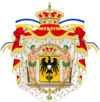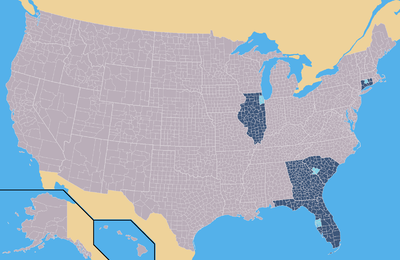Empire of New Europe
This article refers to a micronation or element of micronationalism which is defunct and no longer exists. You can help make the article reflect that or ask on the talk page for further information. |
Empire of New Europe | |||||||||
|---|---|---|---|---|---|---|---|---|---|
| Motto: Fürs Land, Fürs Volk | |||||||||
| Anthem: Im Land der dunklen Wälder | |||||||||
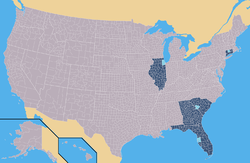 | |||||||||
| Capital | Chicago | ||||||||
| Official languages | English, German | ||||||||
| Demonym(s) | New European | ||||||||
| Government | Constitutional monarchy | ||||||||
• Emperor | Wilhelm I | ||||||||
| James Russell (first) Johannus von Ikner (last) | |||||||||
| Catherine Willoughby (first) Eric Perez (last) | |||||||||
| Legislature | Imperial Assembly | ||||||||
| Establishment | 20 January 2009 | ||||||||
| Currency | US dollar, Amero | ||||||||
| |||||||||
New Europe, officially the Empire of New Europe, was a micronation in North America. New Europe at the time of Wilhelm I's abdication was a confederate constitutional monarchy of originally three states and one territory. The capital city was Chicago. New Europe was a member of the G.U.M. and the founder of the Triune Alliance. New Europe was dedicated to improving micronationalism in North America, in early 2009 the government created the North American Micronational Culture Organization, or N.A.M.C.O. It held a key position in community affairs and maintained a close partnership with the Democratic People's Republic of Erusia. In July 2010 New Europe declared itself inactive in regards to foreign affairs and withdrew from the community for three months. New Europe attempted however to still operate within its claimed territories. It did not last and New Europe united with Ohio, and Eniarku to form the North American Confederation. The North American Confederation partitioned the empire within it and New Europe was declared defunct. In June 2011 after the collapse of the confederation members of the Reichstag invited the Kaiser back to New Europe and re-established it. After various attempts to reorganizing its land claims, symbols, and government the emperor decided to abdicate in December 2013.
History
U.R.N.A.

The U.R.N.A was founded by three people who wanted to secure a healthy and bright future for Europeans of the United States and Canada. Originally starting as a white supremacist movement, the U.R.N.A. was bent on strict policies of racial superiority, and ethnic cleansing. But as membership grew and more activism by others than the original three the U.R.N.A. and its members distanced themselves from racism as much as possible.
U.E.N.A.
The U.R.N.A. was reorganized into a Fascist Dictatorship called the U.E.N.A.. The U.E.N.A. was more open in its membership than its predecessor group, as the previous group only allowed those of German descent to join. The U.E.N.A. accepted all people of European ancestry to increase its activity and numbers. But the Germans of the group maintained control of the nation until late 2009. And eventually the people called for more action, demanding a national vote be held to determine the future of the U.E.N.A. At this point there more monarchists than fascists and the leader of the group was crowned Emperor. The newly crowned Emperor (Kaiser ) Wilhelm, decided to establish the Empire of New Europe and made first contact with the micronational community in January 2009.
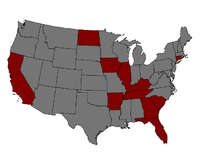
Reformation
New Europe had been dominated by political and social unrest since it was founded. Old issues dating back to the U.R.N.A. continued to plague the day-to-day politics. And one of the communities greatest fears happened, Nazism began to rise in the country. Starting simply by using similar insignia of the German Wehrmacht. But then things went further with the use of certain symbols of the S.S. and Nazi Party of Germany. These New Euro-Nazi's masked themselves under the banner of the New European Conservative Party. The party was formally a monarchist party, and its members did truly believe they were faithfully serving the emperor, but in the end the party was thwarted before they could get into any major power. They did however influence New Europe's involvement in a few wars and are the primary cause to the Cold War, and an indirect cause to the war between New Europe and Erusia.
In May 2009, the emperor began a series of national reforms that lead to the first national election. And the turn out was the people wanted the New European Fascist Party to rule New Europe's politics. Since the election in August, many social reforms have occurred, such as the adoption of new policies regarding white nationalism, and political reform into a pure constitutional monarchy. The list of reforms go on, and the period commonly known as the "Period of Reformation".
Coup d’état
The Fascist cabinet of Johannus von Ikner became displeased with the emperor and his friendship with the Erusian government. They has also become frustrated at how the nation went to far from Fascism that they chose to act. On the morning of November 21, 2009 members of the Fascist Party and the military hacked into New European sites and stole there passwords and then secured actual physical locations in the capital city. Upon hearing this the emperor ordered them to stand down and that the chancellor was dismissed.
The chancellor refused and a skirmish began for three hours. Finally at gun point (Air Soft) Wilhelm acknowledged the end of the monarchy and accepted the new regime. He was given three days to leave the country. And with the monarchy abolished von Ikner changed his title to Reich Führer (Imperial Leader), naming members of the Connecticut and Illinois governments as his subordinates. The Empire was declared to be the Social Republic of New Europe. But some were not happy with this "act of treason", and took what they could and declared the regime illegitimate and rebelled. The rebellion lasted over week and it is considered the bloodiest and darkest time in New Europe's history. But in the end the rebels known as the Loyalists were triumphant and the monarchy was restored and all fascist leaders were put on trial as traitors.
North American Confederation
Between June 14 and October 1, 2010 the New European Emperor left micronational life for Basic Combat Training in the U.S. Army. During this period the Emperor's recently made fiancée was made regent in his absence. At first this as well as other arrangements made by the Emperor seemed to function well, though international relations declined.

The Emperor had appointed Jorge Contreras to act as head of the military while he was away. General Field Marshal Contreras began to expand the Army in particular the Brotherhood Division, of which he had under his personal command. But with a lack of strong government leadership the military began to simply desert their posts and or openly refuse orders. Without a miliary which had formed the backbone of New European influence in the region the government collapsed without any support for a new one. This took place roughly between July 21 and August 13, 2010. Though the regent and General Field Marshal were still loyal followers to the imperial ideals, they lacked the resources and charisma to maintain New Europe as it was. In parallel with New Europe's internal problems her long time ally Erusia was terminated on July 30, 2010. With Erusia gone and the G.U.M. collapsing with it all of New Europe's remaining influence was shattered into memory. The Emperor returned on October 8, 2010 to find his empire in ruins and all that was the community he had left was gone. He simply at first attempted to rebuild New Europe into a modern micronation to keep up with the times, but failed.
On October 31, 2010 the Malum of Ohio contacted New Europe requesting that they send their forces to annex Ohio and reason with the numerous Ohio micronations. The emperor counter offered a unification of the known North American micronations. After a month of negotiations unification under a provisional agreement was achieved and New Europe declared itself defunct. New Europe's representing state in the North American Confederation was its founding state of Illinois, while the rest of New Europe's empire had been placed under direct control of the confederate. The confederation did not last as the autocratic emperor and democratic prime minister began to be at odds with each other over the affairs of the state. In April 2011 the emperor abdicated as ruler of the North American Confederation and left for Micras. The confederation collapsed two weeks later.
Revival and Revolution
Since the failed regency of 2010 there had been a splinter group claiming to be remaining citizens of New Europe. The leader of this group was Alexander Huber, former Nationalist Party member of the Reichstag. They had contacted Jorge Contreras and found out that the emperor had returned to micronational life in October. However they lost track of the community in the wiki moves and were unable to find the real community until late May 2011. Huber found out that the emperor had moved to Micras but was unable to contact him or see any activity by him there. As a cover to actively search the community to find a working contact address Huber created Falia, a micronation based in Georgia. He finally managed to send the emperor an email on June 9, 2011 inviting him back to the wiki and reclaim the Imperial Throne of New Europe. He accepted and returned two days later on the grounds that New Europe go through a second reformation.

The first meeting of Fourth Reichstag convened in North Augusta, SC on June 12, 2011. In the meeting it was declared that New Europes former policies would remain in effect until they are examined by the Reichstag and either changed or abolished completely within a new constitution. And the only party delegates within the Reichstag are Nationalists and Centrists, with the creation of the New European Socialist Party forming from two Falian parties. It was also declared that this will be called the White Revolution, in name for the people of New Europe who struggled to revive and reorganize their nation.
On June 18, 2011 the Reichstag passed and published portions of the revised New European Constitution. It was not entirely altered and it is similar to the 2009 Constitution. The differences are that the Basic Priviledges were made full legal rights for citizens. And that power was taken from both the Chancellor and the Emperor. The Chancellor was no longer appointed by the emperor, nor was he allowed to be a political party leader once he assumed office. More power was given to the Reichstag and nothing could be made final without the signature of both the Chancellor and the Emperor. The final document was signed into law on June 21, 2011.
Early attempts to Regain Influence
While the Reichstag was voting on the reforms at home, the Emperor and Chancellor began expanding New Europe's diplomatic frontiers. Negotiations between the government and Valnorgrad convinced New Europe to abandon the old Triune Alliance and establish a new alliance system, one that was not strictly military. The emperor invited Eniarku to join this new alliance and accepted. Now ratified by Valnorgrad the Treaty of Friendship, Cooperation, and Mutual Assistance was agreed upon by all three nations. Meanwhile Starland had expressed interest in entering an alliance with the new government.
While New Europe has never openly been an enemy of the Organisation of Active Micronations, it refused to join it. Instead it joined the Organization of United Micronations and Chancellor Huber was made the organization's only Vice-Secretary General. As part of New Europe's hope that the organization would be taken seriously with other micronations it pushed for the OUM to adopt the Treaty of Universal Non-Aggression. However it did not last when a forum change caused OUM activity to plumit and dissolve. New Europe became a close friend with Valnorgrad and created the Treaty of Friendship, Cooperation, and Mutual Assistance. This alliance, although still in effect, has not produced any binding relationship between those envolved.
Liberalization
New Europe once again went into inactivity for most of the summer of 2011. Chancellor Huber was involved in a traffic collision in July which was the primary cause for the inactivity. As the Chancellor managed a large portion of New Europe's online assets. He was hospitalized and released for physical therapy but had failed to inform anyone in the government of his injuries. When the Emperor was finally notified he immediately contacted Vice-Chancellor Perez and informed him that the Chancellor could no longer perform his duties. This turn of events caused concern for the Nationalist Party who had lost their primary choice in a candidate. Initially the party nominated its leader Anders Jorgen who refused nomination, the party then selected Jessica Brigan hoping a conservative female politician can persuade voters.
Meanwhile the Socialist Party has nominated its chairman and acting Chancellor Eric Perez. The Socialists were also playing with history for New Europe as Perez would not only be the first Chancellor of Hispanic descent but also the first Left-wing politician to hold the office. The election was a success with every citizen voting. Most of New Europe's ruling elite and military voted for Ms. Brigan while the rest voted in the current Chancellor Eric Perez. Perez began to work immediately on domestic as well as policy reforms but no results of any work he put in became evident until late November 2011 when he introduced the Neutrality Bill before the Reichstag. The bill outlines New European plans to remain neutral in all micronational conflicts and official renounce micronational warfare as part of micronationalism. Many Nationalists however made clear opposition to the bill when it also mentioned the abolition of the New European Navy and Air Service.
A former confederate politician named Jacob Ramirez started an online newspaper originally called Neu Freiheit. However the name attracted negative attention as well as grammer issues from German speaking micronationalists. The name was then changed to Neues Freiheitsblatt which began publishing and immediately received international recognition from leaders in Burkland, Tiana, Freedomia, and Renasia. The newspaper in is considered to be taking a neutral stance on issues domestically and it is privately owned and ran by Ramirez alongside Amy Kalayjian, sister to the Aiken Prime Minister.
While New Europe was slowly liberalizing at home it would be put into the spotlight once again when the Federal Mandate of Havnesgade-Amager, then an unofficial mandate to the OAM, staked a land claim over New England. This created outrage from the population of New Europe's Republic of Connecticut as they claimed to be part of New Europe since before its founding days in 2009. The government contacted Amager to inform them of the territorial dispute but requested to speak with representatives from the OAM to settle the issue. Tsar Kuri of Gishabrun responded firmly by questioning New Europe's right to claim the entire state. It further lead into an asking as to why the government felt the GUM was better than the OAM. Although the dispute was settled peacifully with Amager itself the Reichstag pushed for New Europe to once more become active within the GUM. New Europe was once a key player in the organisation which the emperor felt it could do the most good in. The emperor also felt that the Tsar's lack of proffesionalism regarding the matter proved the OAM was no longer capable of guiding the community.
National colors and symbols
-
National Flag
-
War Ensign (Used on the battlefield during a time of war)
-
Grand Coat of Arms of the Reich
-
Seal of the State. (Used on official documents of New Europe)
-
Kaiser Seal (Used on official documents presented by the New European Emperor.)
-
Flag of the European Union. (Used to symbolize a united Ethnic European nation)
Politics

The political history of New Europe dates back to the United Europeans of North America in 2008. Uneasy with the rule of the fascist James Russell, Tennessee's Queen Catherine, known for her formidable personality, proposed that Wilhelm von Hartmann assume full control over the organisation as its sovereign ruler. The return of Kasey Honings and the resulting election in 2009 convened the Reichsrat (the Imperial Council, in its capacity as a legal nation wide assembly) for the purpose of drafting and approving the constitution of 2009. After a national referendum on January 19, 2009, 63% of voters approved of a monarchy while the remaining 37% favored a fascist regime. Accusations of Nazism and the earliest cries for reform came in May 2009. The New European Reformation would reform New Europe into a fascist dominated government under an autocratic monarchy under the second constitution. Alexander Huber would revive what was left of the tradional autocratic empire in June 2011. He originally proposed a continuation of the imperialist system but the Emperor disagreed and after the first meeting of the Fourth Reichstag reforms were unanimously voted on. The New European Constitution of 2011 is the culmination of the New European transition to democracy.
As a result, New Europe composed of four autonomous micronations and two overseas colonies with varying degrees of autonomy thanks to its Constitution, which nevertheless explicitly states that New Europe has today no official religion but all are free to practice and believe as they wish. Under the imperial system citizens did not have rights but priviledges that could be taken away at anytime. By 2013 people enjoyed 11 inviolable rights that they could appeal to in the event they wished to petition the government on equality issues.
Branches of government
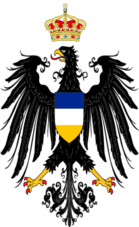
New Europe was a Confederation of independent micronations under a Constitutional monarchy, with a hereditary Monarch and a Bicameral parliament, the Reichstag. The Executive branch consisted of an Imperial Cabinet of Ministers presided over by the Imperial Chancellor, nominated by the political party and elected by the people every four months.
The Legislative branch was made up of the Imperial Council (Reichsrat) with 4 members, represented by regional heads of state or apointed representative to serve regionally designated terms, and an Imperial Diet (Reichstag) with 11 seats of which they were elected by indirect vote serve a term of six months.
The New European empire was organizationally composed in the form of states; it was one of the most decentralized micronations in the community, along with Nemkhavia; for example, all states had their own legislatures, governments, public administrations, budgets, and resources.
Administrative divisions
States
States were the first level administrative division in the empire. These were created after the 2009 constitution came into effect in recognition of the right to self-government to the various regional organizations within the U.E.N.A. at its disestablishment. States were to be integrated by adjacent counties with common historical, cultural, and economical traits. This territorial organization, based on expansionist expectations, meant the annexation of entire U.S. States by regional micronations. By 2013 states were only allowed to at most claim entire counites with a proven New European population.
The basic institutional law of each was its own Constitution. A states constitution establish's the name of the state according to its population, the limits of their territories, the name and organization of the institutions of government and the rights they enjoyed according the state as well as the imperial constitution.
The states had wide legislative and executive autonomy, with their own Parliaments and regional governments. The distribution of powers may have been different for every community, as laid out in their constitutions, since devolution of state rights were intended to be asymmetrical. Only one state—the Republic of Illinois—had its own colonial territory within the empire along the coast of Florida. Aside of regional autonomy, historically states—Kingdom of South Carolina, Kingdom of Tennessee, and the Republic of Connecticut—were devolved more powers than the rest of the states, amongst them the ability of the regional head of state to dissolve the parliament and call for elections at any time as well as their own state organized militia's. In addition states had police corps of their own: Illinois State Police, and the Aiken Royal Guards respectively.
Provinces
States were subdivided into provinces (Provinz), which served as their territorial building blocks. The existence of the provinces was usually guaranteed and protected by the states constitution, not necessarily by the imperial constitution itself. Provinces were the territorial divisions designed to carry out the activities of both the state and the imperial government.
Foreign relations
Since the White Revolution following the re-establishment of New Europe in 2011, the government's Foreign policy priorities were to break out of the diplomatic and political inactivity from the regency period and expand Diplomatic relations, reestablish itself as a community power, and define security relations by international standards of the time.
As a member of Triune Alliance from 2009 until 2011, New Europe had established itself as a major participant in multilateral international security activities, most notibly the Austenasian Civil War. New Europe readmission to the Grand Unified Micronational represents an important part of its foreign policy. With the normalization of diplomatic relations with communist micronations in 2011, New Europe completed the process of universalizing its diplomatic relations.
New Europe's current government has stated it intends to be an effective example of transition from disgraced authoritarian regime to a true micronational democracy for non-democratic micronations in the community, as shown in the many reforms that New Europe's Emperor and recent Chancellors have made since June 2011.
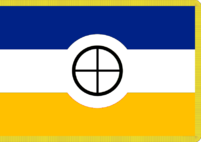
Military
The Armed forces of New Europe were known as the Imperial Defense Force (German: Reichswehr). Their Commander-in-chief was the Emperor of New Europe, Wilhelm I. By 2013 only the Army remained an active branch. There were plans to reactivate the Navy and Air Service, but most plans had been shelved due to financial incapacitates. Military conscription was the primary recruitment drive in the past for New Europe, this was abolished in June 2011. The Army's primary duty was to safely protect the Kaiser, state leaders, and other important members of government.
The New European Armed Forces were divided into three branches:

